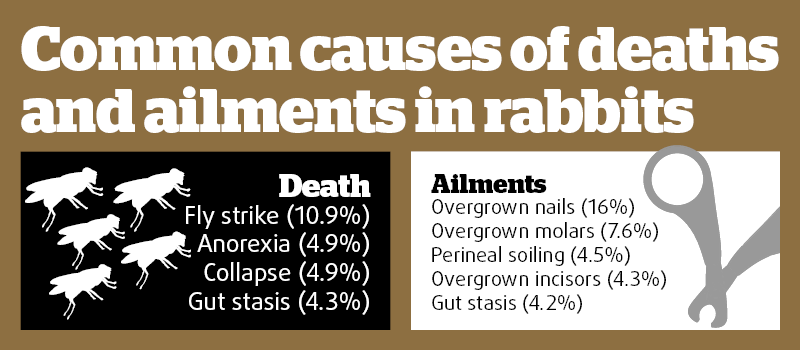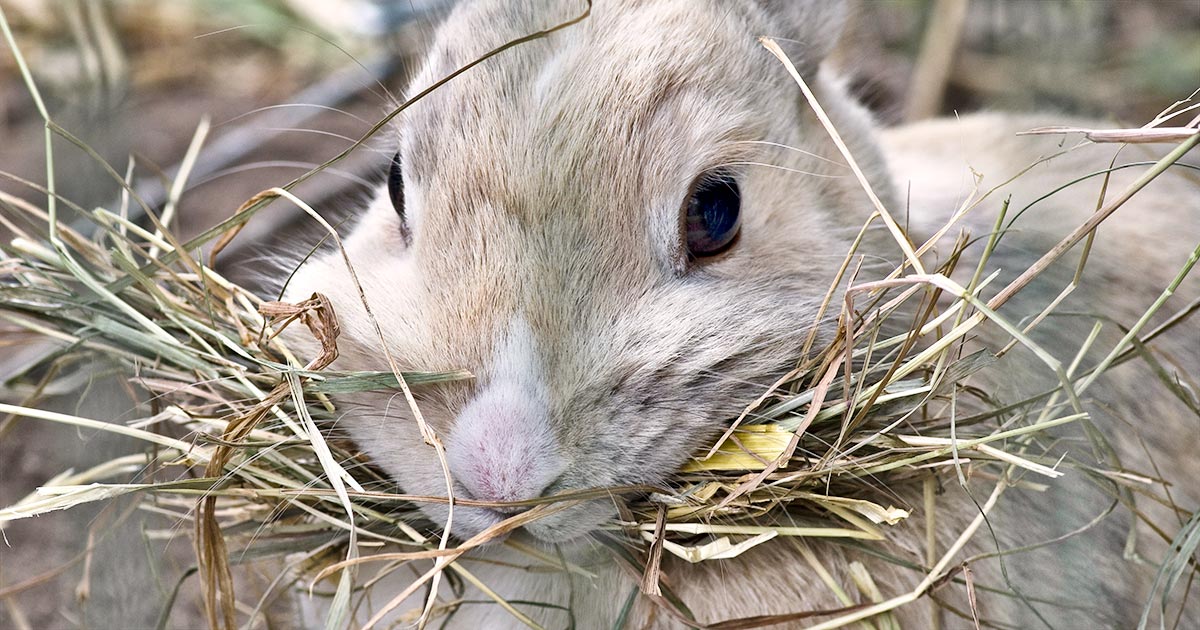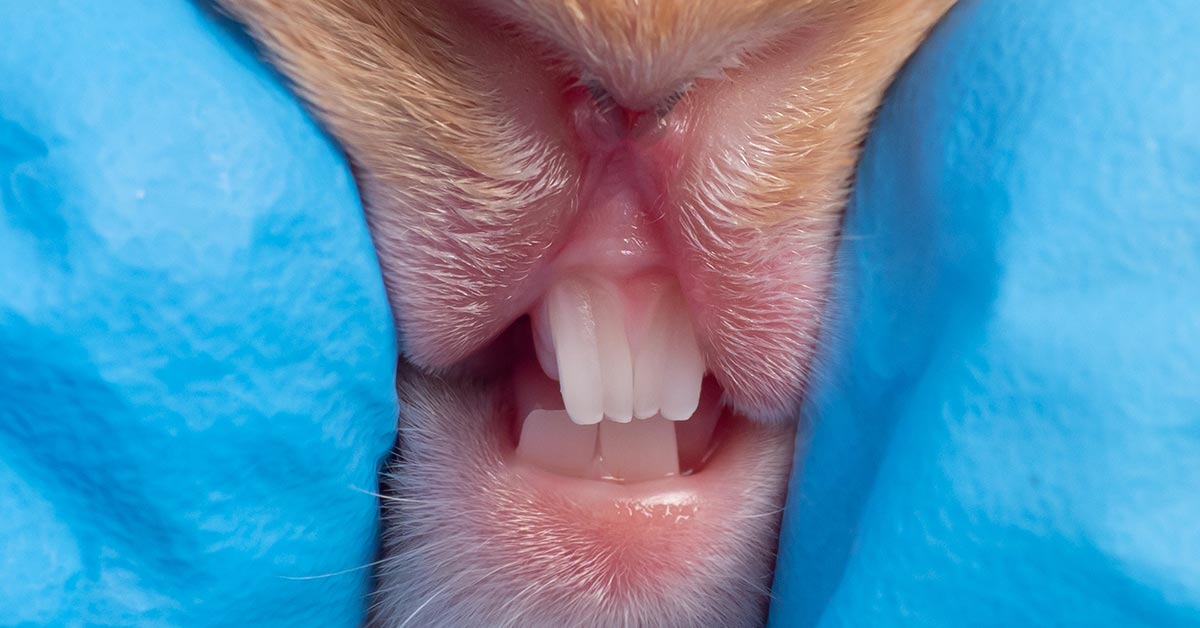11 Dec 2020
Understanding nutrition and dentistry in rabbits
Suzanne Moyes discusses the ideal diet for rabbits, as well as the link between nutrition and dentistry, and identification and treatment of dental issues.

Image © arlee / Adobe Stock
Nearly one million pet rabbits exist in the UK, according to the 2019 PDSA PAW Report, making them the country’s third most-popular pet.
Unfortunately, they’re also one of the most neglected, and a lot of the issues that rabbits face – and veterinary professionals commonly encounter in practice as a result – stem from a basic misunderstanding of their general welfare needs.
Data collected as part of the RVC’s VetCompass Programme in October last year identified the most common issues and causes of death in pet rabbits (below). More importantly, it outlined where key areas of focus need to be in not just treating these conditions, but also in ensuring rabbit owners are supported with the essential information that’s required to reduce admissions.

Many of the above issues – such as fly strike, anorexia, gut stasis, and overgrown molars and incisors – often occur as a result of poor diet.
While the figures are alarming and certainly cause for concern, some respite exists. If we can focus our efforts and attention on addressing the misinformation surrounding the ideal diet for rabbits, we can significantly improve the lives of pet rabbits in the UK.
What is the ideal diet for rabbits?
Despite the complications that can arise in rabbits from poor nutrition, the ideal diet isn’t difficult to get correct.
Rabbits should be fed a natural diet that’s representative of what they would eat in the wild, with a high-quality feeding hay and/or fresh grass being the most important component.
To help owners understand the nutritional requirements of their rabbits, we would always suggest conveying the below information as the perfect diet:
- 85% to 90% high-quality feeding hay and/or grass
- constant access to fresh water
- a handful of fresh (and suitable) leafy vegetables every day
- a small portion (eggcup-full) of nutritious feeding nuggets
- the occasional healthy treat, which can be used to promote natural foraging behaviour
We call rabbits fibrevores, due to the large amounts of fibre they need in their gut to keep their digestive systems busy.
While the basic feeding requirements of rabbits are easy to understand, their digestive systems are complicated for such small animals. When food passes through the rabbit’s gut, it is separated into its constituent parts of digestible and indigestive fibre, through haustral activity. The indigestible fibre moves through the digestive system and is excreted as hard droppings, while the digestible fibre is moved back up to the caecum where it is fermented and excreted as soft, sticky droppings known as caecotrophs, which are re-eaten and re-digested by the rabbit.
Rabbits should have constant access to high-quality feeding hay and/or grass, and, where possible, large open areas to graze as they would do in the wild.
Without the correct amount of fibre in their diet, rabbits are at risk from developing two main issues – dental disease and gastrointestinal motility reduction – both of which can be fatal if not treated. Thankfully, these are largely preventable with the correct diet.

Encouraging hay intake in rabbits
Rabbits are picky eaters and are known to selectively feed, which is one of the biggest barriers many owners may have to overcome to ensure their rabbits are getting the required amounts of fibre in their diet.
Selective feeding normally occurs when rabbits are fed muesli-style foods. They’ll pick out the bits they like most – usually the foods that are high in starch and sugar – and leave behind the rest. Muesli is one of the biggest contributors to selective feeding, and a two-year study conducted by The University of Edinburgh Royal (Dick) School of Veterinary Studies linked muesli-style diets to life-threatening dental and digestive problems in rabbits.
While muesli intake in rabbits has decreased in recent years thanks to successful campaigns and wider awareness, its vital veterinary professionals are conveying the health risks to rabbit owners whenever possible. The cheap cost of muesli and its availability from many bargain pet retailers means 21% of pet rabbits are still fed muesli as part of their main diet.
When you encounter rabbit owners in practice who believe their rabbits simply do not enjoy eating hay, it’s important to work with them to understand the root of the issue and contribute ideas that are known to improve hay intake. As rabbits are picky eaters, they can tell the difference between poor-quality hay and high-quality hay. If owners are trying to feed their rabbits bedding hay, which is unsuitable for feeding, rabbits will understandably turn their noses up at it.
As rabbits are used to foraging for their food in the wild, owners can promote hay intake by using hay feeds or net racks to hang food in different areas and at different heights. Many rabbits select food on colour, so suitable flowers can also be scattered into hay feeds. Hay can also be hidden and incorporated into chew toys.
It’s important to note that while rabbits are picky eaters, a sudden loss of appetite could indicate underlining health conditions such as gastrointestinal stasis or dental disease.
Nutrition and its link to dentistry
They may be a rabbit’s most remarkable and defining feature, but if left uncared for, they can also be one of its most deadly.
Rabbits’ teeth grow at a rate of around 2mm every week, but the feeding of a diet that’s rich in hay and grass helps wear their teeth down through the abrasive gnawing motion that is used when they feed.
When the correct diet isn’t fed, their teeth can overgrow – resulting in malocclusions, dental disease and root infections that often cause abscesses.
Rabbits have four maxillary incisors, two mandibular incisors, six upper premolars, four lower premolars, six upper molars and six lower molars for a total of 28 teeth. These are best divided into two groups: the incisors and the cheek teeth.
While many dental issues are directly attributed to poor diet, congenital conditions, such as jaw malformations, can also lead to dental disease. Congenital conditions are most common in lop and dwarf breeds as their smaller, round (brachycephalic) faces can result in teeth being abnormally positioned and becoming malocculuded as a result.
Rabbits suffering from malocclusion are likely to need regular dental treatments throughout their life, which is why it’s so important to help clients understand the importance of a hay-led diet. As hay needs to be chewed side-to-side, it helps not only wear down the rabbits’ incisors from the initial tearing into the hay, but also – crucially – their molars when they’re chewing it.

Identifying dental issues in rabbits
As rabbits are a prey species, they will naturally hide signs of illness, which makes it harder for owners to recognise dental issues.
In practice, numerous signs could indicate dental issues, but the complexity of dental issues means a physical examination would be required to effectively diagnose conditions.
Early detection of dental disease is essential to avoid long-term issues; therefore, the following clinical signs should also be shared with clients so they can carry out their own basic health checks at home:
- Nasal discharge and eye problems. Overgrown incisors often irritate both sinuses and tear ducts.
- Loss of appetite may indicate – and decreased food intake is often a result of – rabbits experiencing pain when eating due to malocclusions.
- Facial masses or swelling are often caused by abscesses.
- Teeth grinding (bruxism) may be a coping mechanism for rabbits that are in pain.
- Wetness under the chain as a result of excessive drooling caused by malocclusions.
Treating dental issues
General anaesthetic will usually need applying to treat any dental issues after a diagnosis has taken place, while radiography should be performed for all patients with suspected dental disease as certain portions of the mouth, jaw and teeth can only be properly examined radiographically.
The most common forms of treatment are using a specialist dental burr or trimming forceps to return incisors to their normal length.
Teeth should never be clipped, as this can cause root damage, tooth fractures and splinters. Treatment may also involve extracting diseased teeth or removing teeth to treat abscesses.
Other than congenital conditions, many of these dental issues are preventable by conveying the importance of a hay-led diet to owners.
Materials and resources
Positive education is one of the most powerful tools available to the veterinary profession to reduce the number of rabbits being admitted into practice with preventable conditions.
Rabbit Awareness Week (RAW) is the UK’s largest welfare campaign for rabbits, and the official RAW website is full of useful information for both veterinary professionals and rabbit owners. Vets can access the latest rabbit CPD and owners can download care guides that have been created under the professional guidance of vets and the UK’s leading rabbit charities to help owners learn more about these complex, but amazing animals.
All the resources are available to download for free, and lots of posters and other downloadable materials can be used to make your practice more welcoming to rabbit owners.
To view and download these materials, visit the RAW website.
